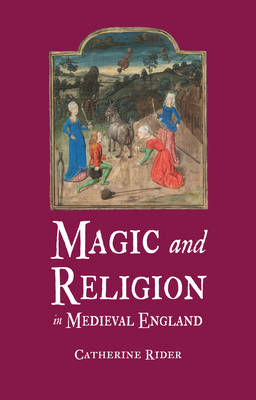From today's perspective it is hard to comprehend just how complex the relationship was between religion and magic in the Middle Ages. Many unofficial rituals and beliefs existed alongside ones sanctioned by the Church. Educated clergy condemned some as magic, but it wasn't always easy to do this because many magical and superstitious practices employed religious language, rituals or objects. Charms recited over the sick to cure illnesses often invoked God and the saints; spells for love and other purposes might use consecrated substances such as the Eucharist. The people reaching for them could even justify their actions by citing biblical precedent. In this book Catherine Rider unearths previously unpublished evidence and new information concerning the widespread use of magical practices and the clergy's response. She asks how educated churchmen, when faced with a wide range of popular religious practices, decided which were acceptable and which were magic. How did they persuade others of their views?
This book traces the change in the Church's attitude to vernacular forms of magic from the turbulent era of King John to the time of Henry VIII and the Dissolution of the Monasteries. These three centuries brought educated clergy into closer contact than ever before with unofficial religious practices and prompted them to draw up more precise guidelines on how to distinguish magic from legitimate religion. Magic and Religion in Medieval England provides a detailed picture of religious and lay life, including clerical education and pastoral care.
- ISBN13 9781780230351
- Publish Date 1 September 2012
- Publish Status Out of Print
- Out of Print 4 March 2021
- Publish Country GB
- Imprint Reaktion Books
- Format Hardcover
- Pages 224
- Language English
